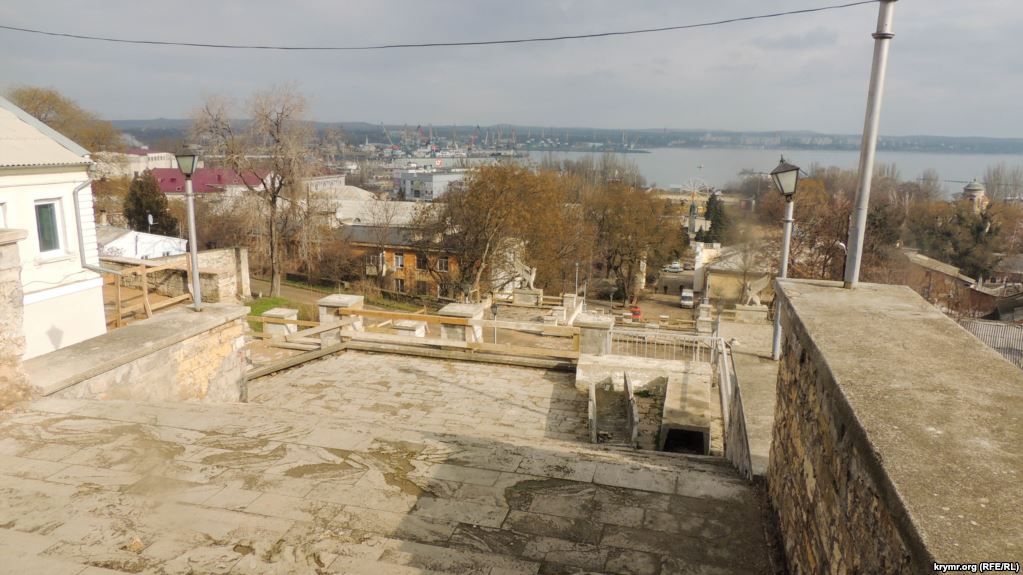Four years into the second occupation of Crimea (the first one started in 1783 and lasted until 1991), Russia is destroying the historical heritage on the occupied peninsula.
At the beginning of 2018, the Ukrainian Prosecutor's Office of the Autonomous Republic of Crimea stated that it opened multiple criminal cases regarding illegal archaeological works and intended damage to historic and cultural monuments in occupied Crimea.
Read also: Crimea’s occupied cultural heritage
Among the illegal activities in Crimea, the prosecutors mentioned the following suspected crimes:- 7,500 archaeological artifacts now cannot be preserved after Russia's Ministry of Culture sanctioned the excavation works in the territory of the occupied region, in violation of Ukrainian law;
- unlawful excavations of a stronghold of the Ancient Rome period and of a grave near Kerch from II century BCE;
- the ruination of archeological objects in the ancient town of Artesian due to the excavation of sand. In result, 450 square meters of the nekropolis with ancient graves and pieces of ancient ceramic artifacts of the early centuries CE are endangered, as well as 20 burial mounds;

- the exhibition of Ukrainian museum items from Crimea in Moscow;
- illegal boring works on the rock cliff upon which the palace Swallow's Nest stands, endangering the architectural monument;
- illegal archaeological research, resulting in the find of an ancient city in the territory of occupied Crimea;
- excavations on the premises of the Genoese Fortress in Sudak, resulting in discovering a church complex of the 13-15th century;
- unlawful restoration works in the Khan's Palace in Bakhchisaray.
Khan's Palace, Bakhchisaray
The Khan's Palace, or Hansaray, was built in the XVI century in the city of Bakhchysaray, some 50 kilometers southwest of the Black Sea port city of Sevastopol.as the main residence to the monarchs of the Crimean Khans. The Crimean Khanate was a Turkic vassal state of the Ottoman Empire from the late XV- late XVIII century, the longest-lived Turkic khanate that succeeded the empire of the Golden Horde. The walled enclosure contains a mosque, a harem, a cemetery, living quarters, and gardens. The palace was placed on UNESCO's World Heritage Tentative List back in 2003, however, the necessary works were not completed and it didn't receive the international status. This January, the Moscow-installed local Crimean authorities started restoring the oldest part of the complex - the Big Khan Mosque built in 1532. They also announced plans to restore the entire palace. The authorities chose a Moscow-based firm with apparently no experience in restoring historic buildings to renovate this Turkic historic place. The renovation shocked the local residents: centuries-old oak beams ripped out and replaced with concrete constructions, old tiles removed to be replaced with modern ones in 'old style', murals nearly erased by streams of water, authentic wall stones treated as rubble.Read also: Russia methodically destroys and removes cultural treasures from occupied Crimea
Great Mithridates Staircase
Built at the end of the XIX century, the Great Mithridates Staircase is a series of flights and balustraded terraces leading to the top of Mount Mithridat near Kerch. In 2015, a year into the Russian occupation of Crimea, the Staircase had partly collapsed and now Russia contracted a Saint-Petersburg company to restore the historic site. However, the works are not looking a restoration, it's rather another modern reconstruction using concrete.The Russian authorities treat Crimea as their own property. It is hard for now to estimate the damage they cause to the historic legacy of the occupied peninsula. The renovation works threaten to replace the historic sites with their modern copies. Russian control over local museums as well as the unlawful excavations may lead to losing the historic artifacts for many years if they will be taken to the Russian museums, as it had happened for centuries with the most significant archaeological finds in the territory of Ukraine being under the Russian Empire and later under the Soviets. More about the occupied heritage of Crimea:
Read more:
- Crimean history. What you always wanted to know, but were afraid to ask
- The oldest museum director in Ukraine: I’m here for the sake of my museum
- Historical finds from Kyivan Rus era under threat in center of Kyiv
- Remains of executed victims found in Lviv’s Prison on Lontskoho Museum
- How Moscow hijacked the history of Kyivan Rus’
- The life and death of people in medieval Ukraine, told by a paleoanthropologist
- Ukrainian experts hope UNESCO status will help preserve ancient Trypillian culture
- Russia methodically destroys and removes cultural treasures from occupied Crimea
- Deportation, genocide, and Russia’s war against Crimean Tatars




















